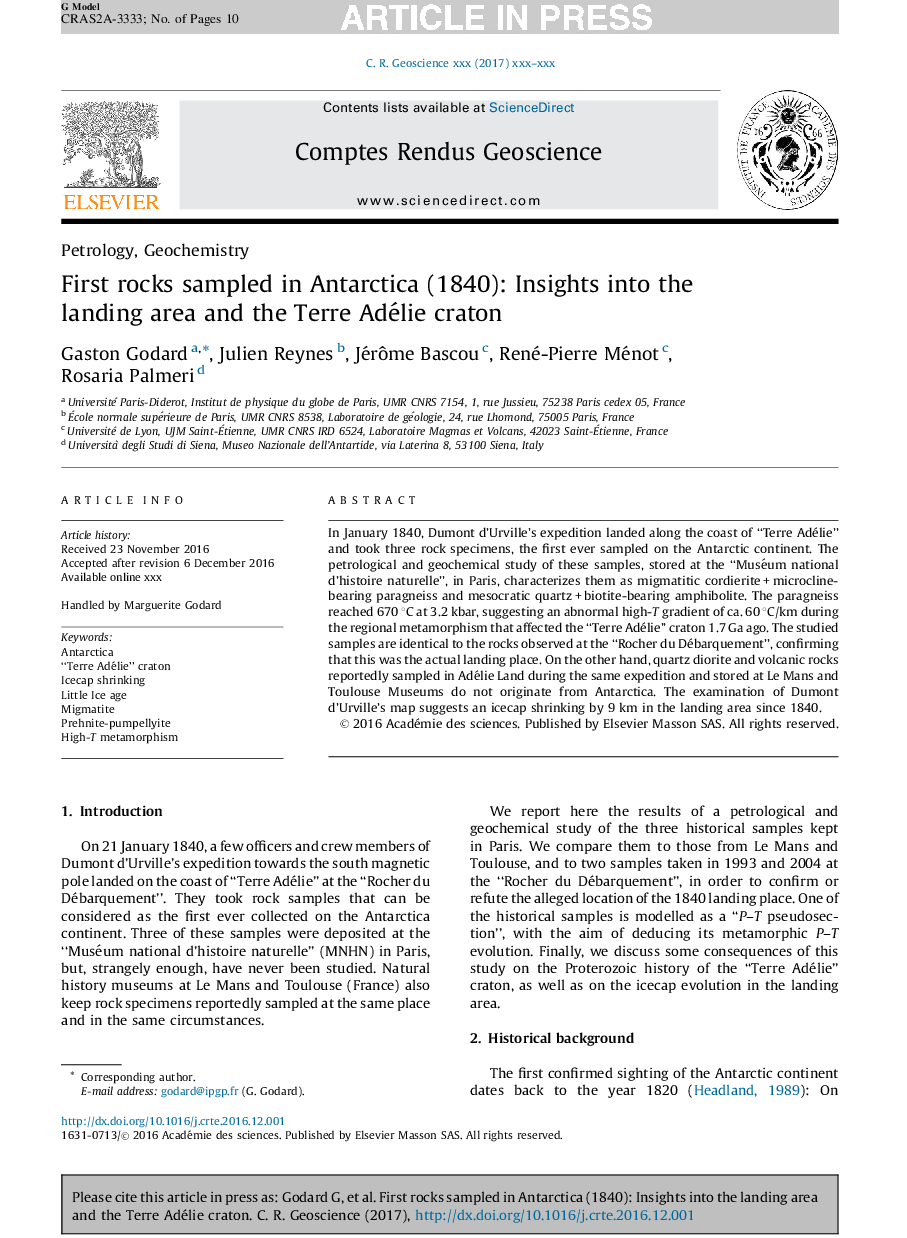| Article ID | Journal | Published Year | Pages | File Type |
|---|---|---|---|---|
| 5755154 | Comptes Rendus Geoscience | 2017 | 10 Pages |
Abstract
In January 1840, Dumont d'Urville's expedition landed along the coast of “Terre Adélie” and took three rock specimens, the first ever sampled on the Antarctic continent. The petrological and geochemical study of these samples, stored at the “Muséum national d'histoire naturelle”, in Paris, characterizes them as migmatitic cordierite + microcline-bearing paragneiss and mesocratic quartz + biotite-bearing amphibolite. The paragneiss reached 670 °C at 3.2 kbar, suggesting an abnormal high-T gradient of ca. 60 °C/km during the regional metamorphism that affected the “Terre Adélie” craton 1.7 Ga ago. The studied samples are identical to the rocks observed at the “Rocher du Débarquement”, confirming that this was the actual landing place. On the other hand, quartz diorite and volcanic rocks reportedly sampled in Adélie Land during the same expedition and stored at Le Mans and Toulouse Museums do not originate from Antarctica. The examination of Dumont d'Urville's map suggests an icecap shrinking by 9 km in the landing area since 1840.
Keywords
Related Topics
Physical Sciences and Engineering
Earth and Planetary Sciences
Earth and Planetary Sciences (General)
Authors
Gaston Godard, Julien Reynes, Jérôme Bascou, René-Pierre Ménot, Rosaria Palmeri,
